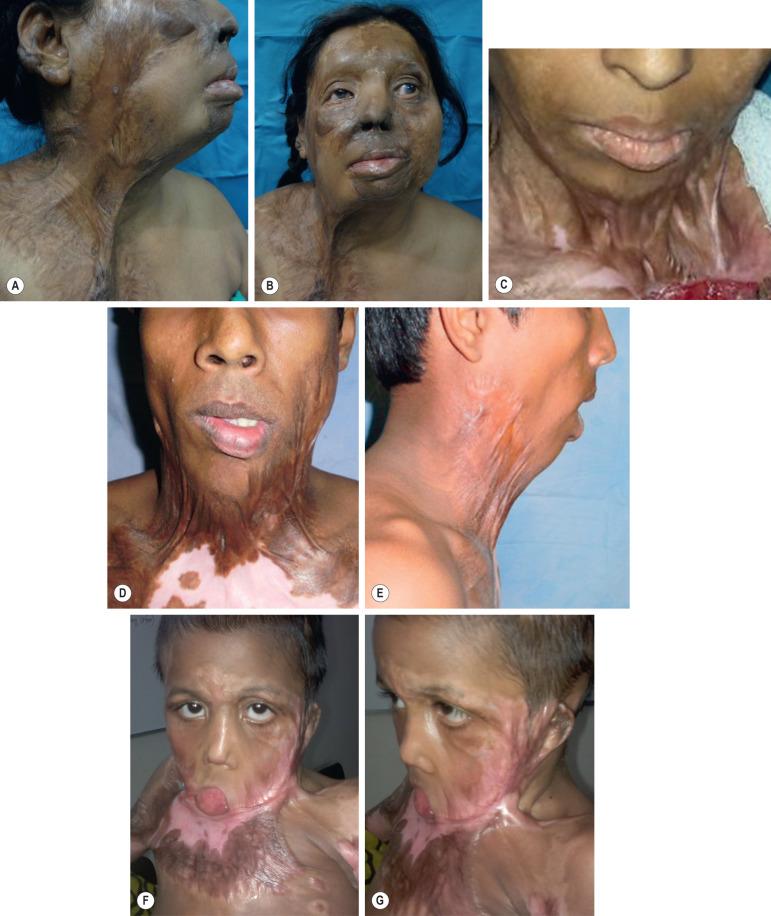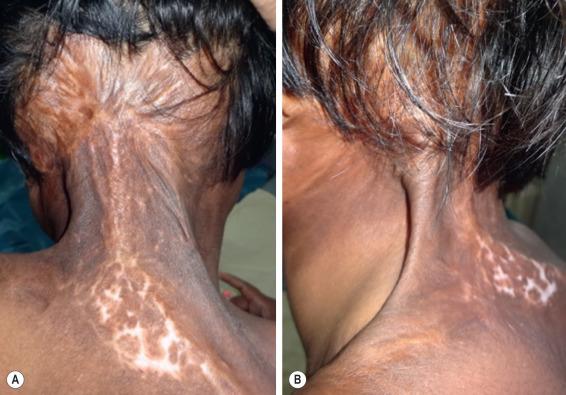Physical Address
304 North Cardinal St.
Dorchester Center, MA 02124
Contractures of the neck are common sequelae of neck burns, even in centers with ideal facilities, let alone in circumstances with limited resources. Among the classifications put forward, Achauer and VanderKam's classification of neck contractures are the one most commonly followed. The goal of surgery for neck burn contractures is to create a mobile and supple neck. Early excision and grafting, where required, with splinting and physiotherapy, have been able to minimize contractures, yet there are large numbers of patients with neck burn contractures ranging from mild to extensive who require appropriate surgical interventions to correct their deformities. Anesthetic concerns are primarily for airway access and patency.
Reconstructive options for the neck contractures are discussed, and the chapter gives the author's step-by-step procedure for the release of an extensive mentosternal contracture, along with the procedure for resurfacing with full-thickness skin grafts. Adequate post-operative care with long-term splinting must be ensured to achieve good results.
Reconstruction of burn injuries of the neck poses a great challenge. Its successful treatment requires a thorough understanding of the regional anatomy, the pathophysiology of the burn wound, and the vector forces working on the healing burn wound. The reconstruction demands sound judgment and good technical expertise of the persons coming forward to treat the patient. While accepting the fundamental limitations of replacing one variety of scar by another, one must set the goal of reconstruction in this region to be a significantly improved functional and esthetic result.
The basic principle of burn management with early excision and grafting is the key to preventing neck burn contractures. In places where resources are limited, the burn wounds of the neck often end up with healing by secondary intention or delayed grafting. Burn contractures of the neck present in various forms depending on their severity. They present from linear scars to those encompassing the whole of the front of the neck. They range from mild restrictions to the extension of the neck to the very severe form of mentoclavicular contractures.
Achauer and VanderKam classified neck burn contractures on the basis of involvement of the percentage of anterior surface of the neck ( Fig. 4.5.1 ). The disadvantage of this classification is that it does not identify the status of the surrounding tissues and their availability for reconstruction. It also does not describe posterior neck burns ( Fig. 4.5.2 ). Onah in his study of 41 post-burn mentosternal contractures in the National Orthopedic Hospital, Nigeria, suggested a new classification system that takes into account the availability of surrounding non-burned tissue for reconstruction. This serves as a helpful guide for the choice of reconstructive procedures.


McCauley gives a separate grading of neck contracture based on the mobility of the neck. Whatever classification is followed, it is appreciated that neck burn contractures bring about limitations in the activities of daily life, and early reconstruction of neck burns or their contractures must be carried out. Makboul and El-Oteify also have a classification for neck contractures that combines the width of the contracting band and the degree of mobility at the cervico-mental angle.
Burns of the neck are commonly sustained from fire, though they may happen from other causes such as electricity, hot water, oils, or steam.
Flame burns are fairly common, and the head and neck region can be the worst affected. Contractures of the neck are common sequelae of burns of the region. Even in countries with ideal facilities and institutional care, post-burn neck contractures are not uncommon.
Though less common, scald injuries cause burns of the head and neck and chest region, particularly so in children. Homicidal chemical burn (acid) injuries, though less common, are also an important cause of severe neck contracture. Instances of suicidal burns are also to be found in these regions.
Become a Clinical Tree membership for Full access and enjoy Unlimited articles
If you are a member. Log in here